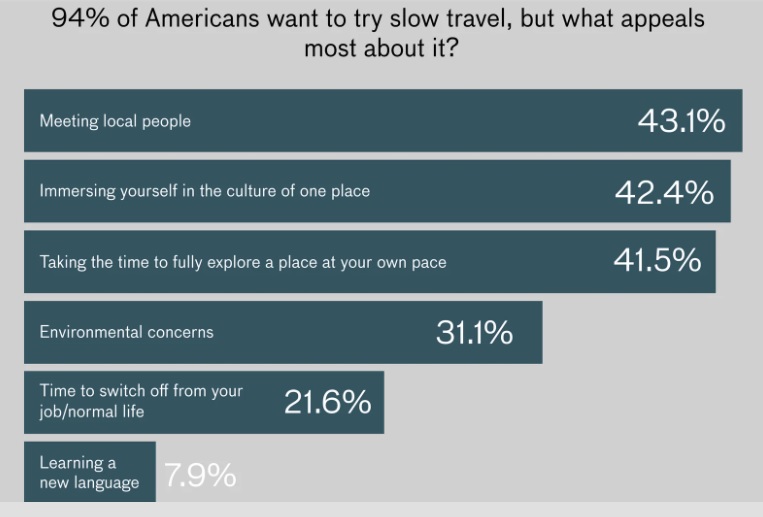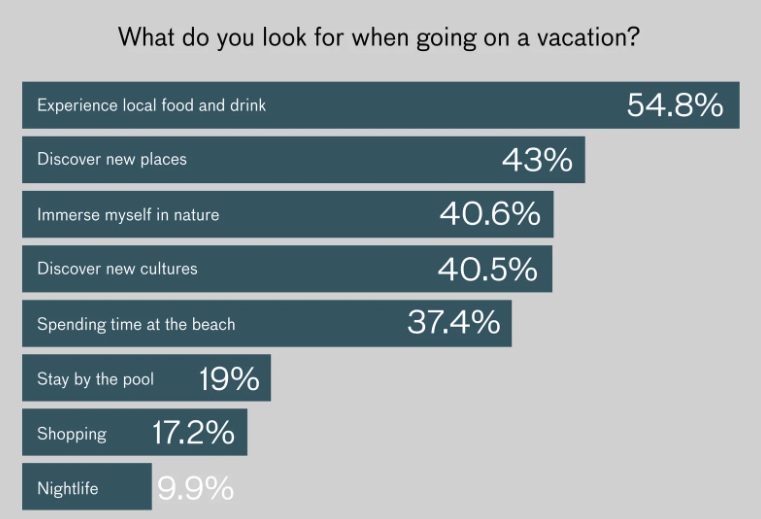How can the travel industry respond to the ‘slow travel’ revolution?
3 min readJust as the slow food movement grew in the 1980s as a reaction against the rise of fast food, slow travel has emerged as a challenge to the type of travel that sometimes feel like an acquisitive and superficial “box ticking” way of experiencing the world.
Conscious rejection of tourist culture
There are multiple drivers at play here, whether it’s the realisation that acquisitive travel is damaging the environment and the destinations we claim to love; or the way Covid-19 lockdowns made us get creative with our free time; or the irony of waiting all year for a much-needed break, only to fill that time with another crazy schedule of visits and plans.
Whatever lies behind individual choices, a travel revolution is underway, or “a conscious rejection of tourist culture”, as Carl Friedrik puts it. The travel magazine’s new survey of 1,095 Americans found that more than half of them find vacations stressful and a massive 94% are interested in experiencing slow travel in the future. That interest extends beyond demographic factors such as age. A large majority (between 85% and 96%) of Boomers, Gen Z and Gen X and millennials are all up for the delights of slow travel.

It’s not what you do but how you do it
One thing it certainly doesn’t mean however is that you possess all the time in the world to spend on holiday. Like the average American, you might only have eight days’ vacation a year. You might only have a few days or hours, rather than several weeks or months, but it’s your approach that counts, the journey rather than the destination, if you will.
Slow travel enthusiasts are more likely to immerse themselves in “authentic” activities – in other words, activities that do not feel as if they have been invented purely to entertain tourists. Hiking a centuries-old pilgrimage route, or camping in the wilderness, or taking the slow train deliberately, or spending a whole afternoon people-watching from a café terrasse rather than working through a to-do list of museums and exhibitions – all these could be described as slow travel.
Can you package it?
It’s a phenomenon that is hard for the travel industry to respond to as they would other trends, for as soon as you package something up and brand it “a slow travel experience”, it could be argued you are changing its essence, removing its “authenticity” and elements of serendipity, and turning it into a holiday product: something that slow travel proponents would avoid.
Still, overlaps with sustainable travel (and not just the colossal value of the worldwide travel market) mean that understanding how people want to spend their time (and money) and helping them to have a meaningful time along the way can truly be a good thing.
Into the unknown
With that in mind key findings in Carl Friedrik’s consumer report are that, for many, meeting local people and experiencing local cultures are two of the most important elements of a holiday. Sampling authentic local food and drink also comes high on many people’s wish list, as well as the ability to go at their own pace, rather than being forced to follow a timetable.

And in good news for destinations looking to spread footfall and reduce overcrowding, a third of vacationers said they preferred seeing more out-of-the-way places and less well-known sites. So, are the days of the Brooklyn Bridge or Venetian canal selfie numbered?



